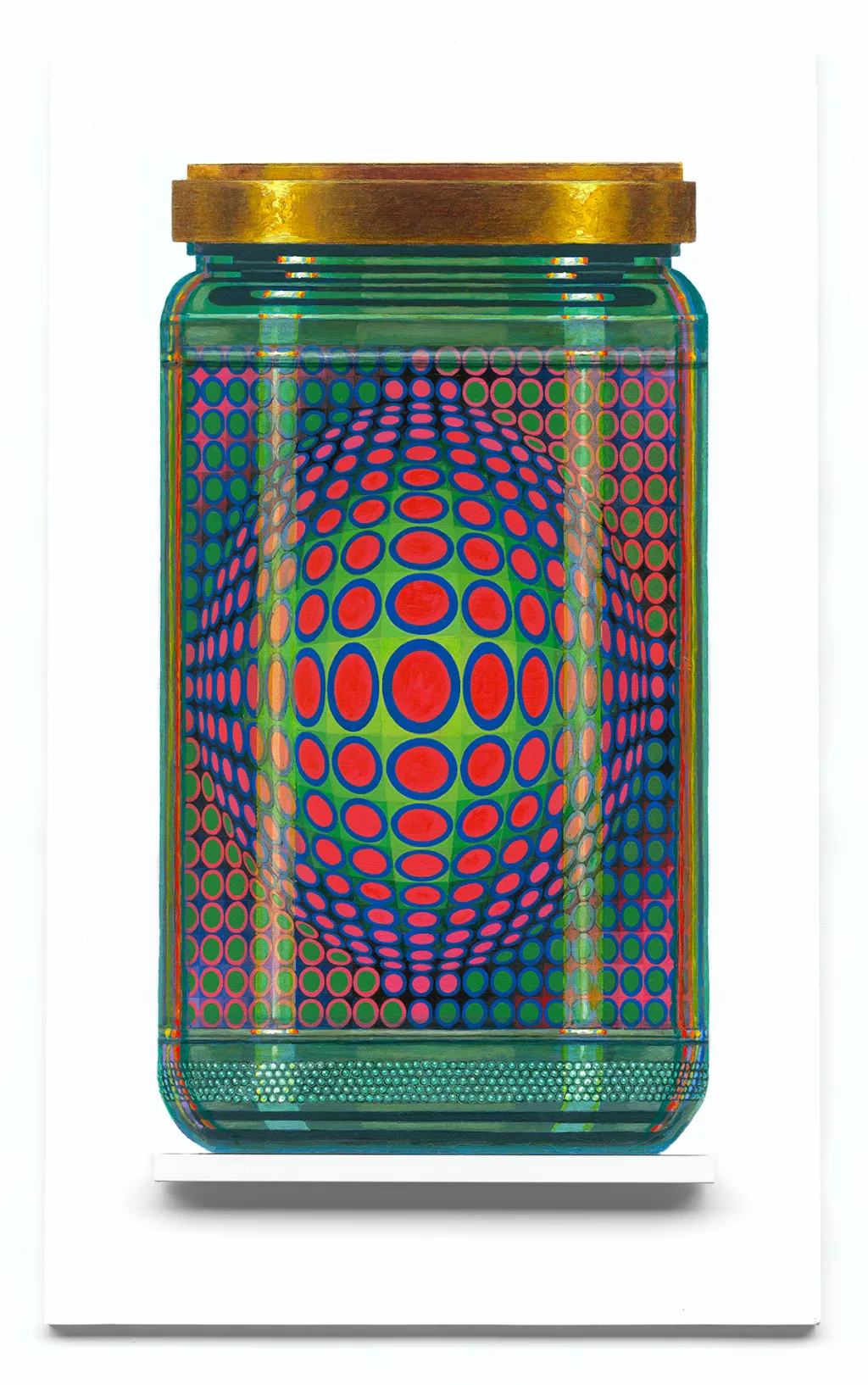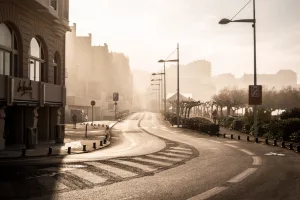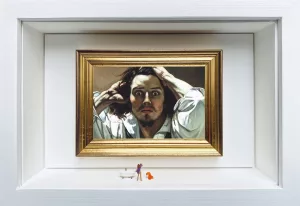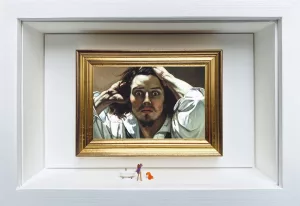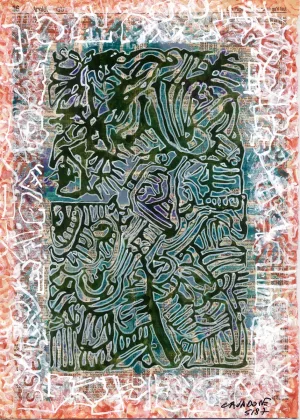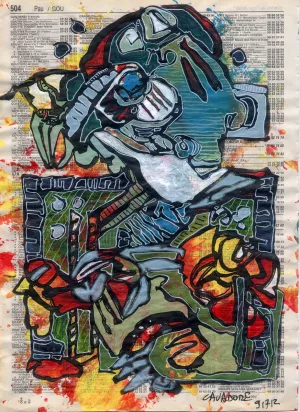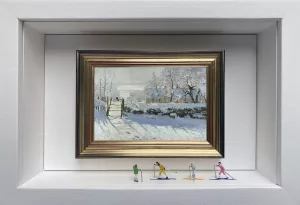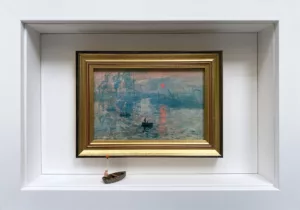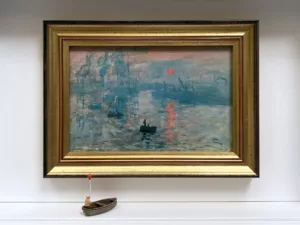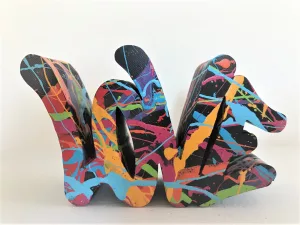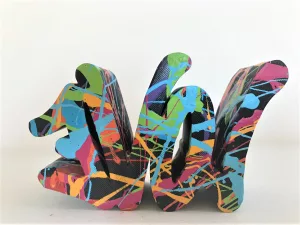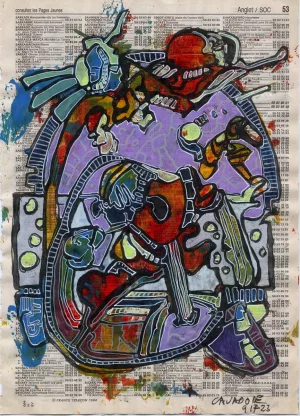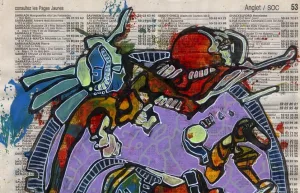Vasarely Jar
Clément Kamena
Mixed media
45cm x 75cm x 10cm
Unique piece
9500,00€
Delivery
The delivery time for this work is 7 to 10 days.
Good to know
We are at your disposal to answer any questions you may have about this work. you may have about this work. Do not hesitate to contact us by clicking here.
About the artist
Clément Kamena
CONSERVATION
The chances of seeing materialized in the same object (a jar) a work by Diego Velasquez or Andy Wahrol were unlikely.
And if it is true that the true is one, the plausible is several, the false is infinite, the reasons for associating them did not appear either urgent or necessary unless a joke mixes these founding data in a playful line, and that the he spirit of the game regains its rights as volatile and decisive as a touch of watercolor. The appearance of a word can cause laughter if it brings together the Wedding at Cana and the peas.
Have you ever found yourself in the awkward position of having to explain the meaning and mechanics of a joke, funny story or pun to someone who wouldn't have laughed at one? of these stories? So, we will not be heavily didactic to say that the word we have chosen is that of “CONSERVATION”, because this term associates the picture rails of museums and the shelf of the grocery store. We decided to paint it; The step between the word and the image is then so quickly crossed that it becomes obvious.
Painting the words jar, conservation, painting through the language of illusion becomes our business. We become curators ourselves. Metaphors flow into our brushes. The actors emerge whether they come from Fayoum or Long Island in 1950. Their story is no longer linear, the archives jostle in these transparent jails, these carefully painted displays because such is our pleasure.
And if the choice of works is not exhaustive, it allows the proximity of such a star who has just been born with another who illuminates the picture rails of the Offices or the Louvre.
In this maze, an empty jar awaits the appearance of a virtual work that has not been able to materialize, or presents the absence of one that has not yet seen the light of day.
The whole consists of a lid screwed on a glass cylinder.
It was then that we understood that we can appropriate all the paintings, drawings and other productions of art through play: play on words. Of course, all means that we must organize a messy and playful browsing in the mixture of works to which we grant the greatest admiration and those deafening which come by their recent celebrity to collide with the firmament of the stars of today. An astrophysicist says that the theses, publications, observations that are currently retained by the scientific community are as likely, for some of them, to be lasting for an observer of the future as those that are offered to the typographer who, throwing out his drawer of characters, would find them in an order that would recompose a tragedy by Shakespeare. Far from our minds the idea of presuming a future..
The magnitude of the task seems immense to us. So we decided to compress the first images and in small size jars.
To the realization of these jars - representation of a painting, representation of the jar, slight deformation in the insertion of the image under the glass - was added the illusion of producing something which would contain all the visuals. The size of the real works is indistinguishable, and reduced to the size of the glass cylinder, frescoes, paintings and details acquire a new scale in the representation: that which the eye of the spectator attributes to it. The dimension of the work represented is a poetic dimension.
Inserted in their jail and thus located in their space, each “figure” has within it the emotions, the visions, the thoughts of their authors. They are inhabited by their gaze, by their talent, by the world in which they have lived. Now ahead of us. they are there abandoned by those who let them escape. Inanimate objects testifying to the presence of the life that animated them and left free electrons in the media diffusion where we find them. Elements available thanks to the unlimited access we have to these images via the internet and all kinds of reproductions. It is a new visual experience that makes us witnesses to their surge.
It is in this space that we take them up in turn, and that we begin our work of appropriation. Placing the paint in its jar and placing the jar in its space. Then he joins the group of those who have already been made. Little by little we were led to explore and discover permanence in the themes, similarities in the styles of different periods and all kinds of new relationships that are set up during these playful groupings. By placing two or three side by side, moving a few others and so on, we compose a visual story, which weaves its way through chance.
The references are from all eras, from the avant-garde to prehistory, from the modern era to that of the Middle Ages, from contemporary to cuneiform. Jumbled up, we have access - with the benefit or the curse of immediacy - to an exhibition on Egyptian art and Damien Hirst's "Incredible Journey". The chronology disappears, the material and formal changes follow one another and confront each other. The time of each painting in the jar becomes universal in its connection to others.

